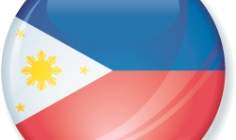
An expanding middle class population, liberalised bancassurance regulations and a low penetration rate provide strong foundations for growth in the Philippine life insurance industry, according to a Timetric report available at the Insurance Intelligence Center.
The report, Life Insurance in the Philippines, Key Trends and Opportunities to 2018, notes that the life segment’s gross written premium valued PHP186.3bn in 2013, after recording a review-period CAGR of 29.3%.
The life segment’s gross written premium is expected to increase from PHP186.3bn (US$3.98bn) in 2013 to PHP343.5bn in 2018, at a projected CAGR of 13% between 2013 and 2018.
Key factors expected to drive growth in the Philippine life insur¬ance sector include:
- Low penetration rate
- Liberalised bancassurance rules
- Rising income levels
- Delivering enhanced services
Low penetration rate: Insurance penetration in the Philippines is comparatively low when compared to Asia’s other emerging economies.
The country’s life insurance penetration increased from 0.83% in 2009 to 1.61% in 2013. Other emerging Asian economies such as India and Indonesia’s life insurance penetration rates as a percentage GDP for 2013 stood at 2.67% and 1.74% respectively.

US Tariffs are shifting - will you react or anticipate?
Don’t let policy changes catch you off guard. Stay proactive with real-time data and expert analysis.
By GlobalDataThe segment’s low penetration rate therefore provides growth opportunities for insurers to expand their business.
Liberalised bancassurance rules: Until July 2013, bancassurance business in the Philippines was only allowed to be carried out by banks if they held a minimum 5% stake in the insurance company.
However in August 2013, the central bank abolished this policy, enabling the channel to expand.
As the country holds a large network of banks, more relaxed bancassurance rules mean the penetration of life products is pro¬jected to increase at relatively low cost over the forecast period.
Rising income levels: The Philippine economy grew during 2009?2013) primarily due to the growth of the country’s infor¬mation technology (IT) and Business Processes Outsourced (BPO) industries.
The country has the largest market for BPO industry in the world, which has led to a rise in individual incomes and an expan¬sion of the country’s middle-class population.
The country’s growing middle class is anticipated to increase demand for life products over the forecast period.
According to A.M. Best, the Philippines’ economy has per¬formed well in recent years with a continued favourable outlook in the near term.
The ratings agency says gross domestic product (GDP) growth in the Philippines is projected at 6.7% in 2015, with higher consumer expenditures, investments and exports set to facilitate fur¬ther positive development.
A.M. Best adds GDP growth over the next couple of years in the Philippines is estimated in the 6.0 – 6.5% range.
Delivering enhanced services: A number of insurers have bundled wealth management solutions with life insurance products.
For example, Sun Life of Canada (Philippines), Inc. launched a new product in April 2014, called Sun FlexiLink Assist which provides cover for life, accident, disability and health protection benefits alongside the potential to accumulate wealth.
Sun Life of Canada (Philippines) recently won the best customer experience award for insurance at the Timetric 2015 Customer Experience in Financial Services Asia (#CXFSAsia) Awards.
The awards recognise those institutions that bring excellence in their customer experience propositions going into product development, service quality, and process efficiency.
Sun Life of Canada (Philippines) won the customer experience award because it has incorporated effective metrics for customer satisfaction; CSAT, NPS and global engagement surveys to ensure that service levels are always in line with their CX goals and identify problem areas for immediate action.
Commenting on the award, Sun Life chief operations officer Karen Casas said: "We are truly grateful for this honour, which affirms that our efforts to maintain a strong customer service cul¬ture in Sun Life are in the right direction. This further inspires us to continue providing our clients with an experience representative of our brand’s promise of warmth and commitment."
Philippine life insurers are also expanding their digital platforms to reach a wide audience with cost-effective solutions.
Insurers such as BPI Philam and Philippine Axa Life have intro¬duced new tools such as iPoS and MSwipe respectively, to provide secured premium payment networks to their clients.
Other insurers, such as Insular Life and Philam Life and General Insurance Company, have launched online campaigns on social networking sites to promote their products.
Challenges
The life insurance in the Philippines also faces the challenge of an increase in capital requirements.
Since June 2012, the Philippines Department of Finance (DoF) has increased minimum capital margin requirements for life and non-life insurers, with companies unable to meet the capital require¬ments being forced to liquidate operations.
This has forced many smaller insurers to merge with larger oper¬ators, and many mergers and acquisitions (M&As) were recorded in 2011, 2012 and 2013.
The capital requirements will increase further between 2013 and 2018 and the Philippine life segment is expected to consolidate more as insurers struggle to survive.
Consumer segmentation
In terms of gross written premium, individual life insurance accounted for 99.64% of the segment, followed by group life insurance with 0.36% in 2013.
Greater employment opportunities and the establishment of new businesses have encouraged life insurers to focus on the individual life category.
Life insurance companies have subsequently started to offer a greater range of individual life policies. For example, Sun Life, AXA Philippines and Insular Life have introduced wealth manage¬ment solutions and unit-linked and investment -linked life insurance products such as Sun FlexiLink Assist, Peso DiverXity and I-Dollar Earnings Advantage (I-DEA).
A rising middle-income group in the Philippines has increased demand for life insurance products, and life insurers in the country are in the process of expanding and enhancing their distribution channels.
The leading distributor of life products in 2013 was the agencies channel, while bancassurance, direct marketing and e-commerce were the fastest-expanding channels in the segment.
Agencies formed the largest distribution channel for the life seg¬ment during the review period. They accounted for 73.5% of the new business gross written premium generated in 2013. Compa¬nies such as Pru Life Insurance Corp. are expanding establishing foreign branches to train agents and enhance their skills.
However, the unpredictable and costly nature of the channel has encouraged some insurers to adopt other more cost-efficient methods of distribution.
Bancassurance was the second-largest and also the second-fastest-growing distribution channel during the review period. The channel accounted for 12.7% of the segment’s gross written pre¬mium new business in 2013.
Rural banks were not permitted to provide micro insurance products prior to 2010. However, with the introduction of micro insurance program in 2010, rural banks can now provide micro insurance.
Due to these reforms, old bancassurance agreements across Phil¬ippines are projected to strengthen their operations, while new bancassurance collaborations are projected to rise over the fore¬cast period.
Direct marketing also gained popularity in the Philippine life insurance segment during 2009-2013.
The channel accounted for 7.8% of the new business gross written premium in 2013. Insurers such as Insular Life organ¬ized events in malls wherein financial advisors provided portfolio assistance to perspective customers. Insurers also advertised and held campaigns to promote savings and financial planning among customers.
Technological advancements and the rising use of internet and mobile use by Filipinos motivated insurers to invent new tools and platforms.
Companies such as BPI Philam and Axa launched new tools to ease operations with the bancassurance and agents channels, while others such as Philam and Insular promoted their brands on social media. The widening scope of e-commerce is projected to increase demand for innovative life insurance products.
Competitive landscape
The life insurance segment in the Philippines is concentrated, with the five leading companies accounting for 59.1% of the written premium in 2013.
As of 2013, there were 31 operational companies in the segment. Sun Life of Canada (Philippines) Inc. is the leading company and accounted for 17.4% of the segment’s total written premium in 2013.
The segment plays a key role in the Philippines’ socioeconomic development and premiums collected are invested in the national economy to finance private and government projects.
In 2013, the insurance regulator set a target for all existing insurers to raise their minimum net worth to PHP1.3bn (US$20.1 million) by December 2022.
The minimum net worth requirement has to increase from PHP250m (US$5.9 million) in 2013 to PHP550m by 2016, and subsequently to PHP1.3bn by December 2022.
On the other hand, the new insurers entering the Philippine insurance industry are required to maintain minimum paid up capital of PHP1bn. Hence, these rising capital requirements for insurers are expected to consolidate the segment further over the forecast period.
Speaking to Life Insurance International, senior executives involved in the Philippine life insurance industry say there is a feeling in the market that the capital requirements are enforced more rigorously against multi-national companies, which have the cash to comply, whereas local players are treated more leniently.
The industry executives interviewed by Life Insurance Interna¬tional say the Philippines is poised for an economic boom, if the political landscape remains stable and business-friendly.
They also note there is increased interest in mobile and internet distribution for life products in the Philippines, with carriers looking at using mobile phone credit as a means of payment for pure protection products.
Market watchers say that low price products and local market knowledge are the key to increasing penetration in the Philippine life market. Insurers need staff in the same timezone, who speak the local language or dialect, and who understand the culture.







